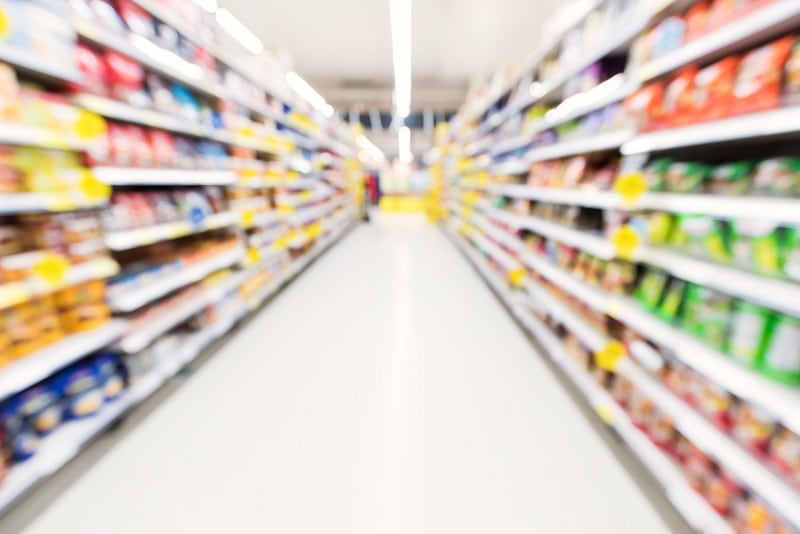Snacking has always felt like a constant in our lives – a universal, comforting and often irresistible habit. But the landscape is shifting.
Recent data and candid insights from key snack industry voices suggest that while snacking isn’t going away, it’s definitely evolving.
And for manufacturers, that means rethinking everything from product formats to pricing and wellness claims.
Whether it’s the rise of appetite-suppressing medications, sticker shock at the checkout or changing work routines, a new snacking era may be unfolding.
A nuanced picture of decline

According to Statista, the US still leads the pack in snack food revenue, generating $51.63 billion in 2024, with China following at $30.79 billion. By all accounts, snacking remains embedded in global behaviour: Mondelēz International’s 2024 State of Snacking report shows 91% of global consumers snack daily, with 61% snacking at least twice and 31% three or more times a day. But beneath these impressive numbers, patterns are shifting.
Euromonitor International reports that while global snack sales continue to grow, the pace is slowing in mature markets as consumers become more selective. The widespread return to more structured in-office work has also reshaped routines – cutting down on home-based, mindless munching and replacing it with more intentional choices.
Consumer research from NielsenIQ adds weight to this trend: by April 2025, 43% of US shoppers said they were buying fewer snacks; 38% were actively chasing promotions; and 17% had dropped premium treats. The biggest decline was in impulse buys – the kind of snacks that used to leap into carts without a second thought.
Corporate earnings tell a clearer story

The earnings calls of major snack food companies underline these concerns. PepsiCo reported a 2% dip in organic revenue in its North American foods division during Q1 2025. Its savoury snack portfolio – including the iconic Frito-Lay brands – showed “subdued” performance. Similarly, Mondelēz International, home to Oreo and Chips Ahoy!, saw a 4.1% net revenue drop in North America, with CEO Dirk Van de Put citing a consumer shift toward grocery staples like meats and eggs.
At Campbell’s, CEO Mick Beekhuizen admitted that cookie and cracker sales didn’t rebound as hoped, leading the firm to lower its 2025 sales forecast. Meanwhile, JM Smucker’s acquisition of Hostess hasn’t yielded expected gains either, with CEO Mark Smucker attributing slower sales to reduced discretionary income and inflationary fatigue.
Appetite for snacks

Adding to this complexity is the growing use of GLP-1 drugs like Ozempic, Wegovy and Mounjaro. Originally developed for managing type 2 diabetes, these medications are now making headlines for their effectiveness in weight loss and they’re changing how, when, and why people eat. One of their most well-documented side effects is appetite suppression and that’s now showing up at the grocery checkout. Analysts and food company execs alike are beginning to cite these drugs as a new factor impacting overall food and beverage demand, especially for highly processed, calorie-dense snacks.
Data from Barclays and Morgan Stanley estimate the widespread adoption of GLP-1s could lead to a 3-5% reduction in total calorie consumption across the U.S. population by 2030. Retailers and brands are watching closely. PepsiCo CEO Ramon Laguarta recently acknowledged the company is “closely monitoring” the rise of appetite-suppressing drugs and their potential long-term effects on snacking categories.
Meanwhile, health concerns beyond medication are influencing snacking behaviours. With the US Food and Drug Administration (FDA) moving to phase out synthetic dyes and ultra-processed additives, cleaner ingredient decks are no longer just a differentiator - they’re becoming standard. Consumers are looking for simple, recognisable ingredients, functional benefits and minimal processing. This is accelerating reformulation across the board, from baked goods to bars to chips.
As shoppers demand more transparency, brands are being forced to rethink both what’s in the bag and how it’s marketed. Clean label claims, portion control and functional benefits (like protein, fibre and gut health) are increasingly driving purchase decisions. The days of snacks as pure indulgence may not be over but they are being reimagined through a much more health-savvy lens.
Reality check

ESA: Snacks aren’t sinking – they’re shifting
Sebastian Emig, director general of the European Snacks Association (ESA), believes the situation is more complex than just a simple decline. “We’re not seeing a meaningful slowdown overall, but rather a nuanced shift in consumer behaviour,” he told Bakery&Snacks. “Volume growth has levelled off in some categories due to economic pressures, but demand remains resilient, especially for affordable indulgences and convenient, portion-controlled formats. The core role of savoury snacks in everyday life – whether as a treat, a quick bite, or a social snack – remains strong.”

What’s really driving change, Emig said, is consumers’ growing awareness. “These shifting priorities are clearly influencing both product development and communication. Consumers are more informed and selective: they’re looking for snacks that strike a balance between enjoyment and wellbeing; that are made with recognisable ingredients; and that align with their values. This is driving reformulation efforts, cleaner labels and more plant-based or high-protein options. At the same time, affordability is key, so manufacturers are innovating to deliver value without compromising on quality or taste.”
Are these just temporary pressures? Emig thinks not. “While current pressures such as inflation and raw material costs are cyclical, the broader shifts in consumer expectations – especially around health, sustainability and transparency – are structural. These trends are here to stay and are shaping a more responsible, consumer-centric approach to innovation across the industry.”
That, he believes, opens the door for smart innovation: “We see exciting opportunities in multiple areas. Reformulating to reduce salt or fat without sacrificing taste is a major focus. New formats – like baked snacks, lentil or chickpea-based alternatives or snacks tailored to specific dietary needs – are gaining traction. There’s also growing potential in digital engagement, with brands using tech to communicate sourcing, nutrition or sustainability credentials more effectively. All of this points to a more dynamic and adaptive future for savoury snacks in Europe.”

SNAC International: A tale of two consumers – value vs premum
Over in the US, David Walsh, VP of Membership & Communications at SNAC International, shared a similarly grounded optimism. “While consumers have been more mindful of discretionary spending, snacking remains an essential part of daily life,” he said. “According to Circana, 48.8% of consumers snack three or more times per day – up 2.7 percentage points since 2014. We’re especially seeing strong frequency among younger consumers, creating a solid foundation for long-term growth as their buying power increases.”

That foundation, Walsh said, is being shaped by smarter, more flexible brands. “Shifting priorities are driving innovation across the snack industry. Companies are adapting by offering portion-controlled options, cleaner labels and products that balance value with quality. We’ve seen some consumers pivot toward value brands and private label options due to economic pressures, while premium products continue to perform well among higher-income shoppers. This duality presents opportunity across the spectrum.”
He also emphasised that current economic pressures aren’t stopping all growth. “While inflation and tariffs have tempered growth in some areas, many brands continue to post revenue gains – especially in natural, discount and club channels. These channels highlight growth potential at both ends of the market: value-driven products and premium offerings with functional ingredients, bold flavours and new formats.”
Data from SNAC backs this up. “In savoury snacks, the category grew modestly in dollars, units and volume. Notably, unit sales growth (1%) slightly outpaced dollar growth (0.3%), indicating that growth is being driven by more than just price increases. Additionally, snack inflation has cooled faster than overall food-at-home inflation, positioning the category to regain momentum.”
Interestingly, it’s not just value snacks that are thriving. Both ends of the spectrum – affordable staples and high-end innovations – are seeing traction. As snack inflation cools more quickly than broader food-at-home inflation, this could create space for renewed growth, particularly as consumer confidence gradually recovers.
As for what’s next? “Innovation will be a major driver of future growth,” said Walsh. “Whether through co-branded flavour mashups; functional and better-for-you ingredients; or new formats like bite-sized clusters and grab-and-go packs; brands are finding creative ways to meet evolving consumer preferences. At the same time, maintaining affordability remains critical, especially in today’s economic environment. The good news is that snack producers are rising to the challenge – delivering on value while continuing to exceed consumer expectations for taste, convenience, and variety. Snacking is alive and well in the US and our members are well-positioned to lead the way forward.”
A rebalancing, not a retreat

Snacking isn’t disappearing – but it is shifting. Between inflation, tariffs and the rise of appetite-suppressing medications, the industry is undoubtedly being challenged. But the core motivations behind snacking – convenience, pleasure, a little indulgence – remain intact.
As Emig summed it up, “We believe this is a structural shift, not a temporary dip.” And with Walsh underscoring the adaptability of US snack makers, it’s clear the snack aisle isn’t shrinking. It’s simply changing – and those who pivot wisely stand to win big in the next chapter of the snacking story.




